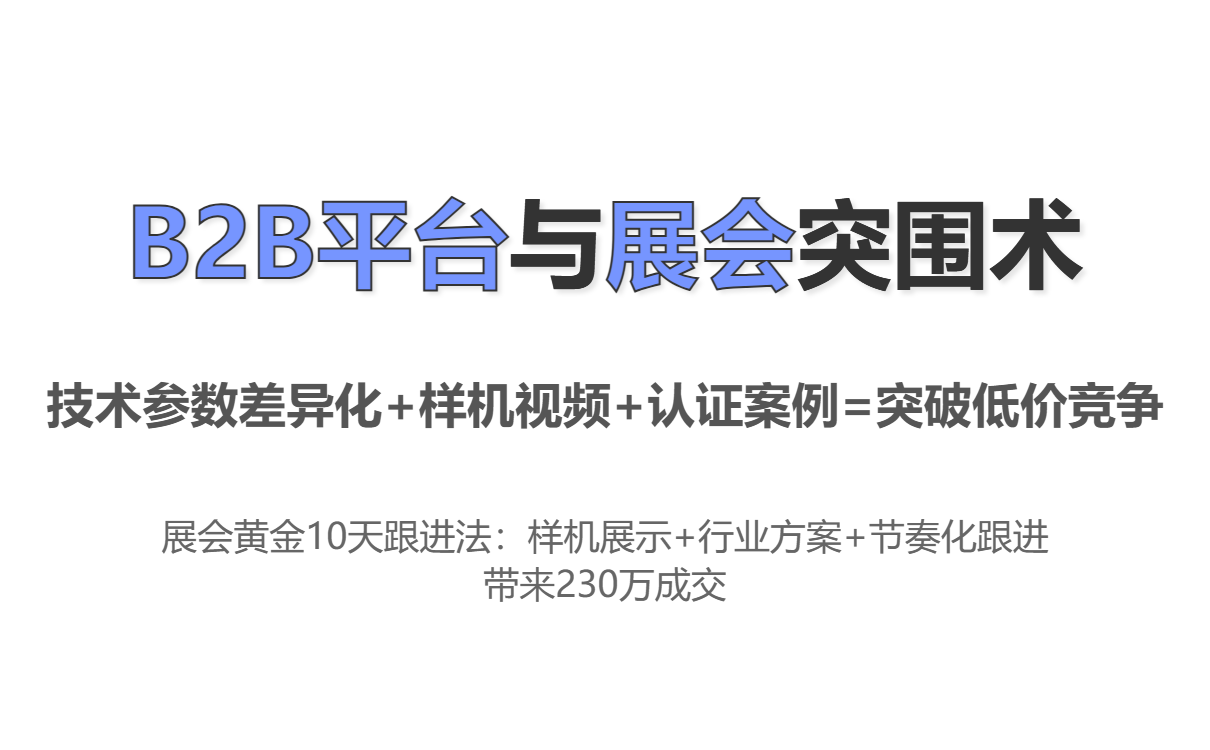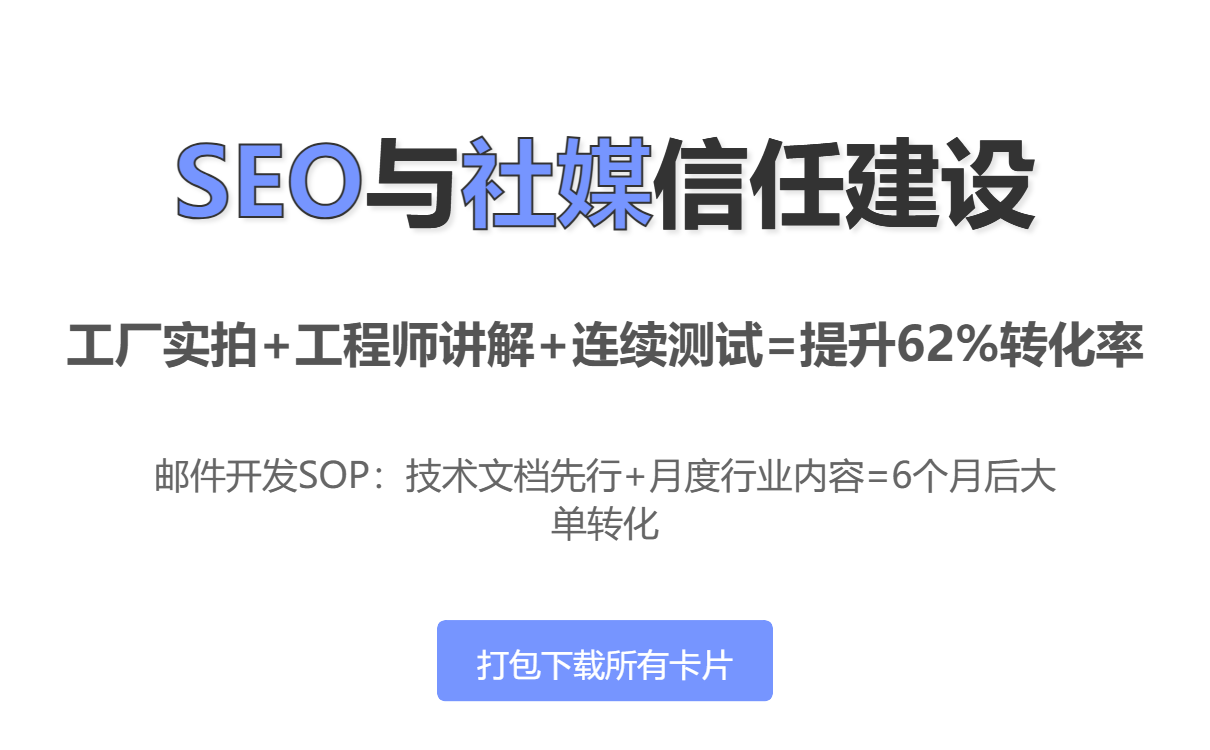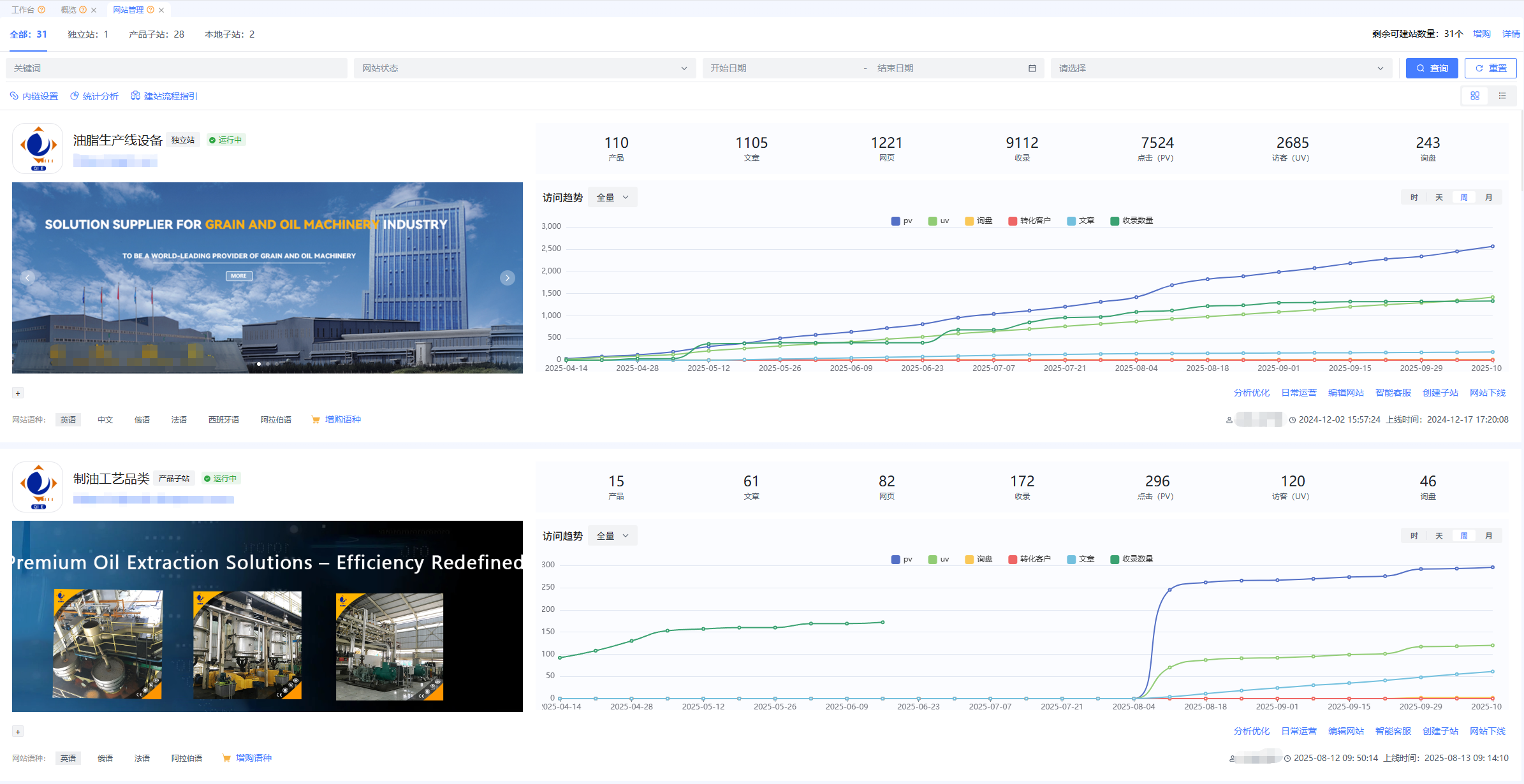
This article is based on a real growth path:
A small automated packaging equipment factory in East China (18 employees) achieved annual sales of 11 million RMB in 18 months.
The company mainly produces small cartoning machines/automatic sealing machines , and is a typical startup in the machinery industry.
The article will break down their channel share, budget allocation, and strategies, and tell you: why, despite being a small factory, they were able to establish a successful customer acquisition loop within 18 months. Recommended reading: 2026 Global Machinery and Industrial Equipment Industry Outlook: 5 Opportunities and 3 Risks
Common channel distribution patterns in the early stages of the machinery industry (small machinery factories/small equipment traders/start-up automation companies):
| channel | Percentage (early stage) | Features |
|---|---|---|
| B2B platform | 40–55% | Inquiries came quickly, but price competition was fierce. |
| exhibition | 15–25% | Quickly reach real buyers and achieve a high conversion rate. |
| SEO (Official Website) | 5–10% | Initial results are slow, but the value is lasting. |
| social media | 5–10% | Used to build trust and demonstrate strength |
| Email Development / Buyer Directory | 10–15% | Low cost but requires continuous content refinement |
| Advertising placement | 0–5% | High budgets are not recommended in the early stages of a startup. |
The proportion of companies with real-world case studies:
B2B: 47%
Exhibitions: 21%
SEO (Official Website Inquiries): 8%
Video/LinkedIn: 6%
Email development: 14%
Advertising: 4%
The achievement of 11 million in sales within 18 months was not due to luck, but to the right channel strategy.
Below, we'll break down the process into six core channels and provide case studies to show you how to quickly replicate them.
Most effective in the early stages, but must break through the low-price competition.
In their early stages, startups must rely on platforms to accelerate their reach, but 90% of small companies get stuck in the same pitfall:
The platform receives many inquiries, but they are all about comparing prices, negotiating prices, and offering low prices.
The case study company encountered the same predicament in the early stages on 1688 International and Made-in-China, with almost all inquiries for the first three months being "Can you lower the price? MOQ?"
They changed the original rigid tables of "power/material/size" into engineer's language:
"72 Hours of Continuous Operation Without Downtime Test Data"
"Sealing stability improved by 18%, suitable for high-speed production lines in food companies."
"All core components are sourced from HIWIN/AirTAC in Taiwan."
Result: The number of inquiries on the platform decreased significantly from low-price buyers and increased from engineer-type customers.
They filmed 3 videos:
Walk through the factory in 8 minutes
Prototype continuous operation test
The engineer explained why the machine is stable.
Once the video was changed, the platform's conversion rate increased by 42% .
CE, ISO9001
Photos of actual customer factories using the product
Efficiency comparison before and after customer use (e.g., "packaging speed from 15 pcs/min → 26 pcs/min")
Upload one technical white paper (to increase engineers' trust).
Upload 3 sample videos (must be actual shots)
Add "Compare with Competitors' Differences" to product pages
Required certifications + real production line photos
The platform's goal is not to "distribute goods," but to make customers feel that you are not a small workshop, but a supplier with technical expertise.

The fastest way to acquire real customers, but 70% of small factories use the wrong methods.
The case study company participated in two trade shows in its first year and brought back:
86 sets of valid business cards
23 companies in-depth communication
Eight prototypes were tested.
Five deals were ultimately completed, totaling 2.3 million.
What allowed them to break through was not the size of their stall, but the right approach.
Many small factories make the mistake of having a professional-looking booth, but lacking any "moving objects".
They kept the cartoning machine running continuously on-site to attract customers to stop and ask questions.
Instead of a generic product catalog.
For example:
Application solutions for "food factories"
Standardized production process for "pharmaceutical outer packaging"
Improving packaging consistency for "daily chemical products"
Customers will only take your information if they see that it is "related to my industry".
They use the following rhythm:
Day 1: Send group photo from the exhibition + 5-line follow-up email
Day 3: Send sample test video
Day 7: Sending quotes and parameter comparisons
Day 10: Invite for video call or remote test drive
This rhythm resulted in 5 successful transactions for them.

It's not about increasing traffic, it's about "improving the quality of inquiries."
Early SEO may not bring in a lot of inquiries, but it can increase customer trust .
Although the case company's website only receives 12-17 inquiries per month, the order quality is extremely high (ranging from 30,000 to 150,000 in price range).
Workshop photos
Equipment loading/debugging video
Employee operation details
CE
ISO
Material test report
Continuous running tests (e.g., "72-hour stability test")
Engineers showing their faces and explaining the principles and structure is far more effective than just reading text.
Startups need to quickly build credible websites.
AB Customer can generate multilingual website groups/technical parameter pages/factory showcase pages with one click.
Supports uploading mockup videos, engineer explanation videos, and certification documents.
The overall design resembles the official website of a "medium-sized machinery factory," significantly enhancing customer trust.
The case study company's website transformed from "like a small workshop" to "like a powerful manufacturer," resulting in a 62% increase in conversion rate.

It's not about gaining a huge following, but about "letting customers see that you're producing."
The case study company only does two things:
LinkedIn: 2 pieces of genuine content per week
Electrical commissioning
Factory shipment
Customer installation site
YouTube: Upload demo running video
This content may not necessarily go viral, but it can influence customers' judgment: "This company really makes machines."
Ultimately, social media brought:
1 Brazilian agent
Two large customers are testing the equipment.
5–10 private message inquiries per month
The most cost-effective customer acquisition method for startups, allowing for sustainable and continuous customer growth.
The case study company combined "exhibition visitors + B2B platform buyers + directory tools" into a database.
They implemented a general SOP:
For example:
Machine stability test report
Customer Industry Solutions
Electrical drawing examples
Result: Engineer-type clients especially respond well to this approach .
We don't push sales; we only provide industry-related content.
Two of the major clients only returned to place orders six months later.
In the early stages, it's only used to "test product selling points".
Case study: Companies spend only 1500–3000 RMB per month to test Google Ads.
Which keywords are more accurate?
Which countries can I click for more information about?
Which type of landing page has a higher conversion rate?
Ultimately, they found a better growth path and did not increase their advertising budget.
The following is a replicable budget reference for an "18-person machine shop":
| channel | Monthly Budget | percentage | Remark |
|---|---|---|---|
| B2B platform | 8000–15000 | 40–55% | Main channels in the early stage |
| exhibition | Annualized return of 40,000–80,000 | 15–25% | 1-2 games are enough |
| SEO / Official Website | 1000–3000 | 5–10% | It is recommended to use AB Guest to improve site quality. |
| social media | 0–2000 | 5–10% | Content-driven, not money-burning |
| Email Development | 1000–3000 | 10–15% | Continuously build up the buyer database |
| advertise | 0–3000 | 0–5% | Small budget testing selling points |
Total budget suggestion: 10,000–20,000 RMB/month is sufficient to complete the growth loop.
The strongest growth driver for the case study company is not traffic, but content:
Real production line video
Engineer's Explanation Video
Continuous running test data
Industry Solutions PDF
Certification and Factory Qualification
This content makes clients willing to go from "trial orders from small factories" to "long-term cooperation".
This is why AB Customer Smart Website Builder can improve conversion rates:
It is ideal for systematically presenting technical information, factory capabilities, and prototype videos, rather than simply piling them up on a page.
Rapid platform growth → Large orders generated at trade shows → Enhanced trust through official website → Continuous presence on social media → Long-term follow-up with email marketing → Market testing with small-scale advertising
When you can:
Showcase technological capabilities in B2B
Attracting engineers to stop at the exhibition
Presenting the factory's true capabilities on the official website
Output professional technical documents in email
Then you will no longer be a "small factory with the lowest price", but a "machinery supplier worth cooperating with".
.png?x-oss-process=image/resize,h_100,m_lfit/format,webp)
.png?x-oss-process=image/resize,h_100,m_lfit/format,webp)

.png?x-oss-process=image/resize,h_100,m_lfit/format,webp)
.png?x-oss-process=image/resize,h_100,m_lfit/format,webp)
.png?x-oss-process=image/resize,h_100,m_lfit/format,webp)
.png?x-oss-process=image/resize,h_100,m_lfit/format,webp)
